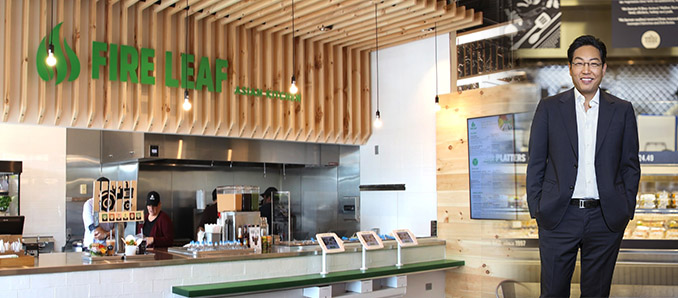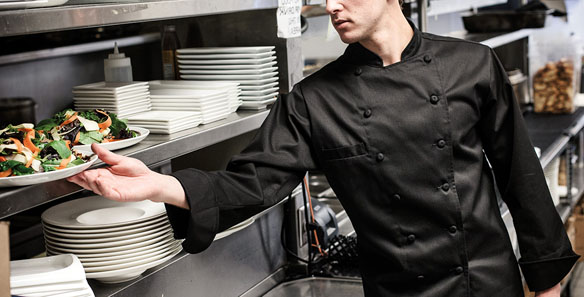SpotOn’s innovative tech helps restaurants improve revenue and labor retention
By Debbie Hall
Nostalgic though it may be, the days of having wait staff take orders on a notepad and walk tickets back to the kitchen are fading fast. Between the labor shortage and changing guest habits spurred by the pandemic, restaurateurs are turning to technology to streamline operations and connect with guests in new ways. SpotOn is a technology company offering a cloud-based restaurant management platform that centralizes how restaurants monitor operations and staffing assignments, sell to guests across multiple channels, and access customer data—all with a local, dedicated representative and 24/7 personalized support.
SpotOn’s mission is to grow revenues for restaurants by empowering them with the tools they need to run and grow their business and also connect with customers in a meaningful way. It’s a mission born of firsthand experience in the restaurant industry.
Doron Friedman, SpotOn’s Chief Product Officer and co-founder, is himself a restaurant owner with over 20 years of experience with a full understanding of the challenges facing restaurateurs. He often tests new SpotOn restaurant tech in his own café before it is released to clients. On a far wider scale, SpotOn works closely with restaurant clients to get real-time feedback and continually improve their restaurant products.
Hillary Holmes, a SpotOn client and the General Manager of Von Elrod’s Beer Hall & Kitchen in Nashville began using SpotOn’s handheld point-of-sale, QR code dine-in orders, and KDS screens in February 2021. She has seen near immediate improvements in operational efficiency, employee and guest experiences, and revenue.
“We can seat the same number of guests with a smaller staff and still create a better experience using the SpotOn system,” says Holmes, who has 17 years of experience in the hospitality industry for both corporate and privately-owned brands. “Our beers are coming out in one to two minutes instead of three to five minutes. Our food is coming out in eight to 10 minutes. I see an increase in our guests’ beverage orders using QR codes. I attribute this to the efficiency of our team using SpotOn.”
Speaking more generally, Holmes focuses on solving two key problems. “I find that many challenges, both pre-and post-pandemic, tend to come back to product reliability and staffing. Not having either one of them dramatically impacts business.”
“During the pandemic, there was a big shift from on-premise dining to online ordering. Now, with people still ordering online and coming to dine on-premise, kitchen staff are having difficulty keeping up with the demand. With our products, the restaurant can determine dollars in the system versus actual orders and work on staffing with increased demand,” agrees Friedman.
He sees modern restaurant technology moving towards one-touch integration—what was once just a point-of-sale has become the heart of the operation, offering a better way to read and analyze data in one location.
“For some, a restaurant POS is just an order-taking solution, but it’s really going to become a restaurant’s lifeline,” Friedman said. “A POS is a restaurant’s connection with their customers, it drives the business growth, but it has to be completely integrated into everything a restaurant does to create a better experience for guests and a better business overall.”
Another trend Friedman anticipates is a movement toward the service-oriented restaurant where people go for the experience. Technology will be integral to connecting the service elements so that guests have a more enjoyable experience.
Because SpotOn’s products are fully integrated with their tech features, the company is able to help restaurants operate through the labor shortage. The SpotOn Serve handheld POS, for example, is proving to help restaurants attract and retain staff.
SpotOn Serve enables servers to take orders, process payments, and print receipts, all from one easy-to-use handheld device right there at the table. This allows the servers to cover a larger section, turn more tables, and make more tips.
Holmes can attest to this. “With SpotOn Serve, our staff is able to service more tables, with quicker turnover, better efficiency, and more accuracy,” she explains. “Our guests are leaving larger tip percentages, and our servers can increase their sales and earn more money.”
It’s a recipe for success. Using SpotOn’s technology helps increase the amount of food and beverage sales, especially with up-sale capabilities. Reduction of labor costs with staff making more money aids in retention and higher revenues. The promotion of top-selling items can also increase sales.
“Restaurants need to work smarter with our new business models,” Holmes says. “They also need to focus on team members’ experience and how they are doing. This is connected to our guests’ experience, and restaurants need to have systems in place for speed and efficiency.”
In addition to helping with on-premise sales, SpotOn’s technology is helping create new revenue opportunities for restaurants. SpotOn’s online ordering service is fully integrated with Order with Google, enabling guests to order directly from online searches, helping restaurants increase revenue and efficiency with orders going straight to the POS system. The technology works for dine-in guests, too, by utilizing QR codes. Guests order and pay directly from their table by scanning a code at the table for a safe and contactless experience. Alternatively, the restaurant can maintain a full-service experience by offering QR codes on receipts for guests to pay from their mobile phones. All this comes commission-free, helping restaurants save money compared to third-party delivery apps.
For SpotOn, it’s all about connecting restaurants with their guests to maintain and grow their business. When restaurants sign up to use SpotOn’s platform, they get access to marketing tools to better engage their guests, along with robust data and reporting to determine why some guests have not returned while others are best customers.
“The SpotOn dashboard is very accurate,” explains Holmes. “We can see who our regulars are and their favorite tables where they want to be seated. We are developing a concrete relationship with them based on what they enjoy with accurate suggestions for them. We also use the reporting program that analyzes what beers are not selling and what our best sellers are so that we can adjust that as well. We can target our customers so much more efficiently and increase sales.”
With the labor shortage, this is particularly important. SpotOn is helping restaurants gain flexibility and keep up with increased demand without adding additional team members. As a result, tickets are not misplaced or lost, and dishes are cooked more accurately to guests’ taste.
“We are seeing happier staff members and satisfied guests, which means we retain labor and our guests return,” says Holmes.
This is all good news for restaurant operators after facing one challenge after another over the last year and a half.
Read Also: Ranch Rider Spirits Co. Introduces The Buck Vodka Seltzer
“We knew many people’s life savings were on the line as well as people’s livelihoods when the pandemic started,” says Friedman. “We worked very hard to help restaurants work and succeed within this new dynamic. We have a Restaurant Advisory Council made up of some of the best restaurateurs in the world, representing all types of businesses, from casual to fine dining. We listened to what their challenges and needs were. We then spoke with our local account executives and customers and quickly pivoted to deliver the technology restaurants needed.”
According to Holmes, one of the biggest challenges in recovering from the pandemic is adjusting to changing consumer habits and winning back the margins. “For our margins to come back, we need to overcome the labor shortage and rising food and operational costs. Having something as fluent as SpotOn to adjust our offerings very quickly in the back-of-house and make those updates immediately is helping tremendously.”
Even with an end in sight with the pandemic, SpotOn has no intention of slowing down. In addition to continually improving their existing product line, they’re also looking toward the future. This includes the emergence of cryptocurrency and consumers paying via apps instead of with credit cards and cash. Restaurants will need a POS system that is capable of seamlessly accepting those new forms of payment, and SpotOn will be there.
“If you look back at the history of the United States, especially recessions and times that have been the darkest, that is when innovation really begins,” says Friedman. “We are about to enter a renaissance of restaurants, and we are experiencing that now. With SpotOn, we are focused on the customer, and we know our clients are also focused on their guests and really care about them. Together, as partners, we can make restaurants even more successful.”
For more information on SpotOn, visit spoton.com.






